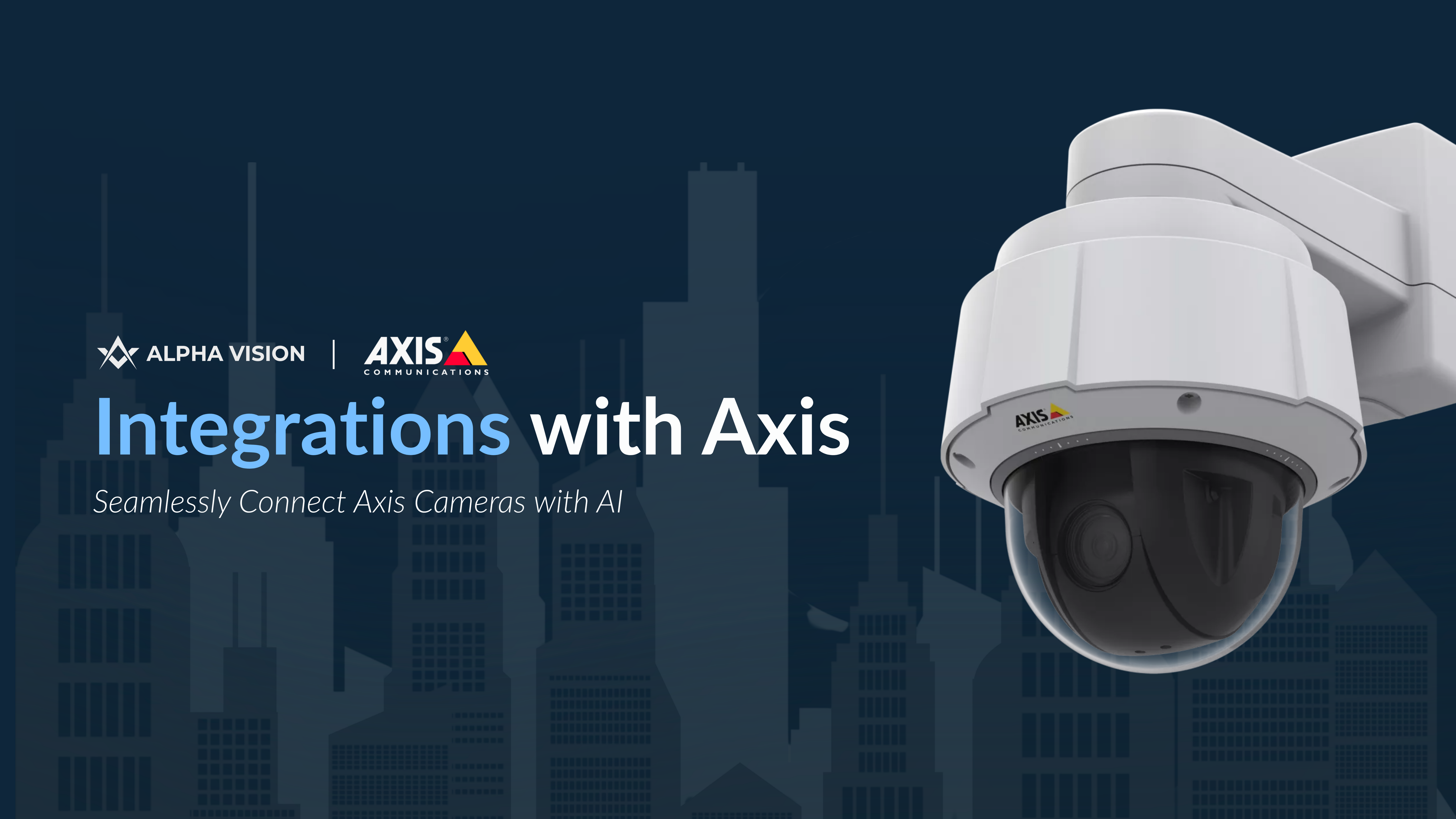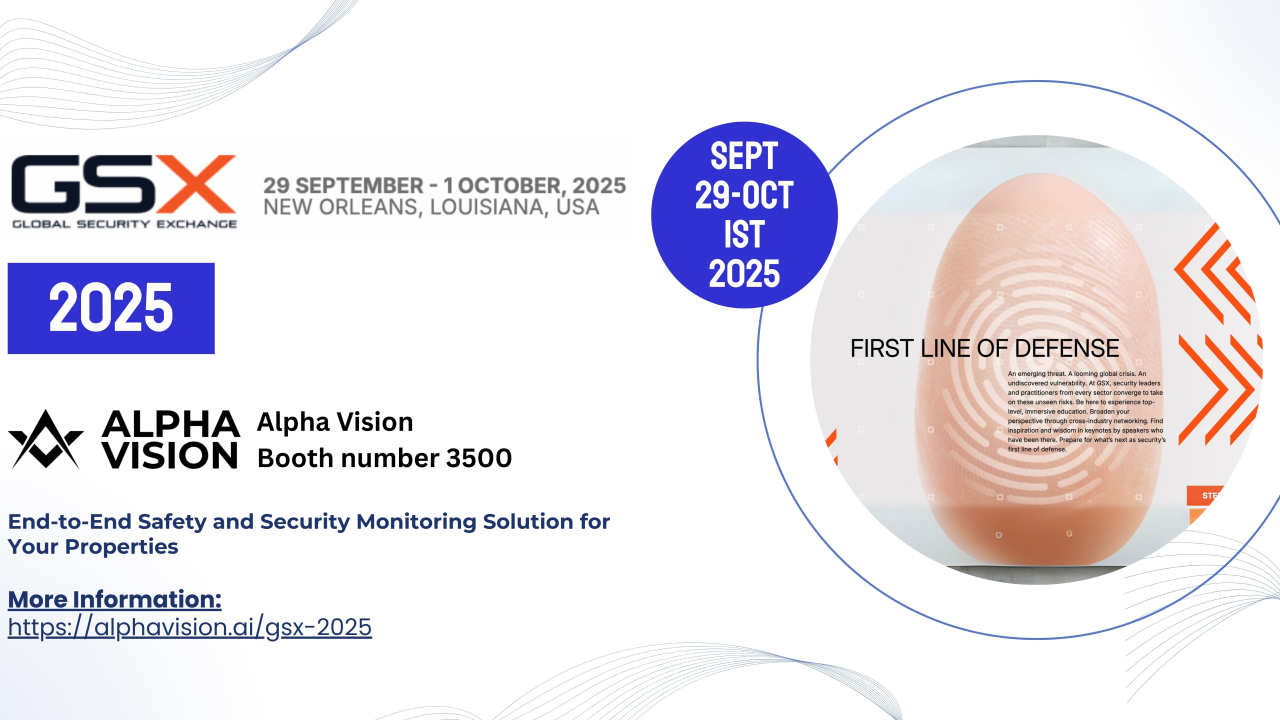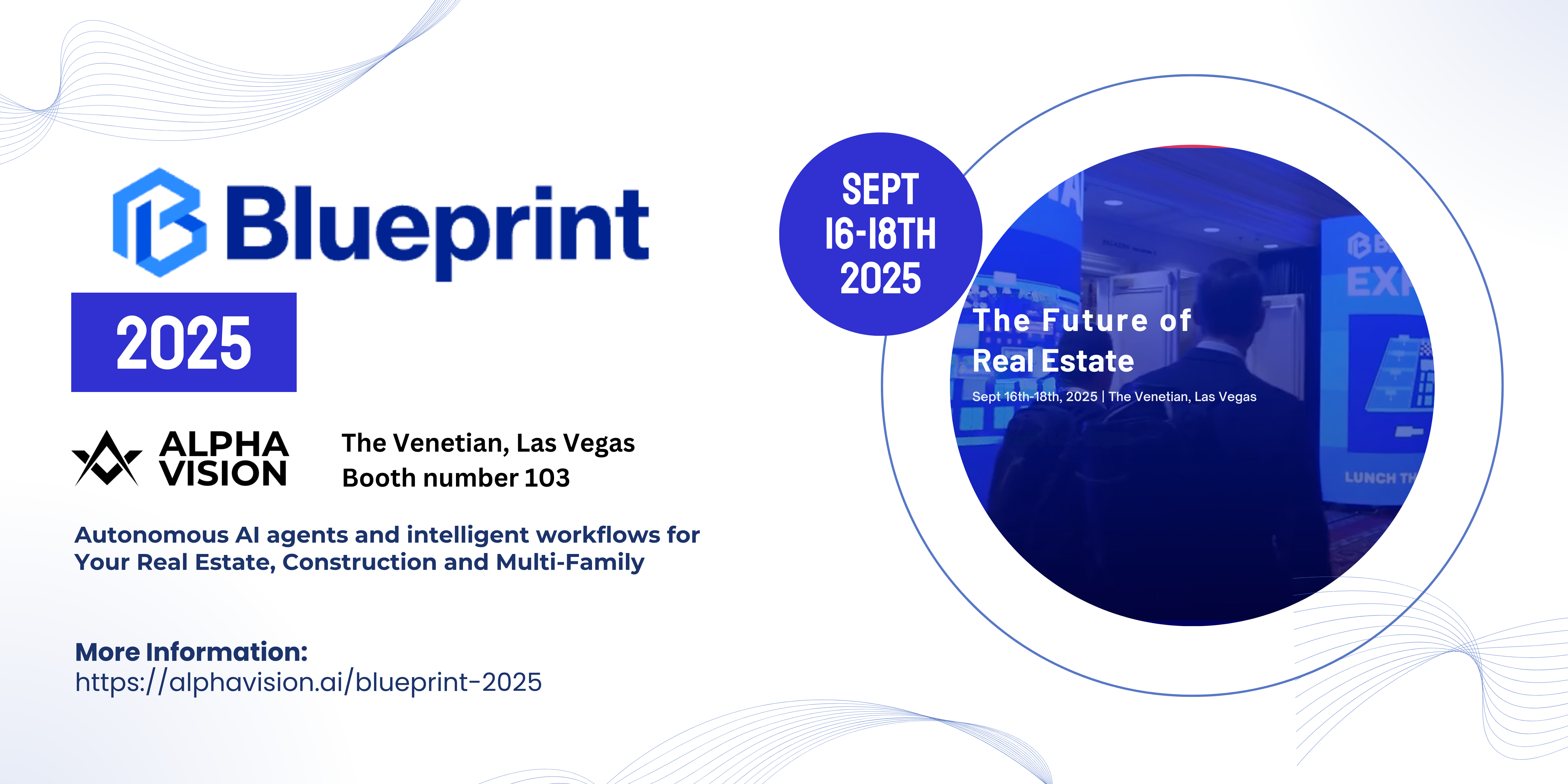Construction sites face a perfect storm of security and safety challenges: they often have open perimeters, valuable heavy equipment, and a constantly changing workforce. In 2025, equipment theft is costing the U.S. construction sector over $1 billion annually, and nearly 1 in 5 workplace fatalities occur in construction– making robust surveillance more critical than ever. Traditional guards and basic CCTV coverage have limitations in such dynamic, expansive environments. Enter modern AI-powered surveillance systems: these solutions go beyond passive cameras by proactively detecting intrusions, issuing real-time alerts, and even helping enforce safety rules on-site. Below, we highlight the 10 best AI surveillance systems securing construction sites in 2025. Each solution is either NDAA-compliant or cloud-based, leveraging cutting-edge AI to help contractors deter theft, improve safety, and streamline site operations.

1. Alpha Vision + Axis Integration – AI-Powered Surveillance with Axis Hardware
Alpha Vision + Axis is a powerful integration that pairs Alpha Vision’s AI software platform with Axis Communications’ industry-leading cameras. This combined solution leverages Axis’s state-of-the-art camera hardware (known for clarity and durability) with Alpha Vision’s cloud-based “Physical AI” capabilities. For construction firms, it means getting the best of both worlds: top-tier camera performance and advanced AI analytics in a fully cloud-native, plug-and-play system.
-
High-End Axis Cameras: Construction operators gain unmatched video clarity and coverage across large sites. Axis cameras offer up to 40× optical zoom for capturing fine details at long distances and 360° panoramic views to eliminate blind spots. The cameras are rugged, weatherproof, and vandal-resistant, ensuring reliable operation in harsh outdoor conditions – ideal for expansive job sites and remote project locations.
-
Alpha Vision AI Analytics: When connected to Alpha Vision’s platform, these cameras become active security agents. Key AI features include Magic Search (find video clips instantly by object, behavior, or event), Intrusion Alerts (real-time detection of unauthorized entry with instant notifications), License Plate Recognition for tracking vehicles, and an AI Inspector for automated safety and compliance checks (e.g. detecting unsafe worker behavior or PPE violations). Routine monitoring tasks are handled by AI, so staff can focus on responding to issues and managing the site.
-
Live Intervention & Deterrence: The integration supports two-way audio through network speakers, enabling security personnel to remotely “talk down” trespassers or issue warnings on-site. Coupled with Alpha Vision’s proactive alerting, this means incidents can be deterred or de-escalated in real time – for example, broadcasting a live warning to an intruder that the site is under surveillance. Such immediate intervention helps stop theft or vandalism before it escalates.
-
Compliance & Cloud Convenience: Alpha Vision + Axis is built for enterprise standards – it’s fully TAA and NDAA compliant, which is crucial for government-related projects and security-conscious builders. The solution is 100% cloud-native, requiring no on-site NVR/DVR hardware. Deployment is plug-and-play: simply install Alpha Vision’s firmware on Axis cameras and connect them to the cloud; they auto-discover and come online instantly. Updates and new AI features roll out via the cloud, so the system is always up-to-date without manual maintenance.
-
Scalability and Cost Efficiency: Designed to grow with your operations, this integration makes it easy to expand coverage across multiple sites without heavy infrastructure investment. Adding a new construction site is as simple as mounting additional Axis cameras and connecting them to the Alpha Vision cloud. This reduces IT overhead and setup time, delivering a cost-effective solution for firms managing many projects. Whether you have 5 sites or 50, centralized cloud management keeps everything streamlined.
-
Broad Industry Adoption: The Alpha Vision + Axis combo has been battle-tested in various environments. It’s trusted by enterprise campuses, government facilities, construction sites, property management companies, and retail chains for its reliability and intelligence. For construction security, in particular, it not only detects and deters trespassers, but also helps monitor safety compliance and even project progress (e.g. site activity logs) via its AI insights. This integration marries Axis’s top-tier imaging with Alpha Vision’s AI, resulting in a smart surveillance solution that actively prevents incidents and scales effortlessly across job sites via the cloud.
2. Genetec Security Center – Unified Platform for Large Sites
Genetec Security Center unifies video surveillance, access control, license plate recognition, and analytics in one enterprise-grade system. Its open architecture supports many camera brands and IoT devices, letting construction teams integrate legacy or specialized cameras without lock-in. Features like map-based monitoring, ALPR, and support for time-lapse or drone feeds make it ideal for sprawling or multi-site projects. Known for reliability and strong cybersecurity, Genetec is widely used where strict oversight is required.
Limitations:
-
Complex Deployment: Requires IT infrastructure and expert integrators.
-
High Cost: Premium licenses, hardware, and modules add up.
-
On-Premises Focus: Less cloud-native; often needs local servers/VPNs.
-
Steep Learning Curve: Rich features demand training and dedicated staff.
3. Avigilon (Motorola Solutions) – AI Cameras & Analytics
Avigilon, part of Motorola Solutions, provides premium NDAA-compliant cameras and advanced AI analytics for large or critical sites. Its ultra-HD cameras (4K+) cover wide areas with clarity, while Appearance Search lets users quickly locate people or vehicles across footage. Self-learning analytics detect anomalies (loitering, crowds, left objects) and send real-time alerts, while built-in License Plate Recognition flags vehicles at site entrances. Integration with Motorola radios and access control enables coordinated responses, making it a strong fit for mission-critical construction projects.
Limitations:
-
High Cost: Premium cameras, servers, and licenses can be prohibitive.
-
Complex Deployment: Requires professional setup and IT support.
-
On-Premises Focus: Relies on local NVRs/servers; less cloud-native.
-
Closed Ecosystem: Works best with Avigilon hardware, limiting flexibility.
4. Avigilon Alta – Cloud AI Surveillance Made Simple
Avigilon Alta (formerly Ava Security) is Motorola’s cloud-native surveillance platform, designed for fast deployment and multi-site scalability. It supports both existing IP cameras (via a cloud connector) and Alta’s own cloud cameras, eliminating on-site servers. Features include a sleek dashboard, Smart Timeline for event highlights, advanced video search, and automatic cloud updates. With simple setup and easy scaling, it suits construction projects that need flexible, quickly deployed surveillance.
Limitations:
-
Cloud Dependence: Requires stable internet; outages reduce functionality.
-
Subscription Costs: Ongoing fees may outweigh one-time on-prem setups.
-
Compliance Concerns: Off-site video storage may not fit all regulations.
-
Hardware Limits: Some AI features only work with Alta’s own cameras.
5. Verkada – Cloud Surveillance with AI Analytics
Verkada offers a cloud-managed security platform combining cameras, sensors, and alarms with built-in AI. Its plug-and-play design requires only power and internet—no local servers. For remote or off-grid construction sites, Verkada provides LTE gateways and the CR63-E battery-powered LTE camera with solar support. Features include intelligent search, real-time alerts, license plate recognition, and deterrence tools (two-way audio, sirens). A single web or mobile dashboard manages all devices across sites. Fully NDAA-compliant, Verkada emphasizes secure, centralized oversight.
Limitations:
-
Privacy Concerns: Facial recognition and LPR raise legal/privacy issues; past controversies add caution.
-
Vendor Lock-In: Works only with Verkada hardware; no third-party support.
-
High Ongoing Costs: Premium hardware plus required subscriptions can strain budgets.
-
Limited Customization: Features are fixed; little room for custom analytics or integrations.
6. Rhombus Systems – Smart Cloud Video Security
Rhombus delivers a cloud-based video and IoT platform with AI features like facial recognition, object detection, and advanced video search. It’s valued in construction for easy deployment, scalability, and low-bandwidth operation—cameras store footage locally and upload key events, making it workable for sites with limited internet. Rhombus supports wireless and solar-powered setups, provides real-time alerts (e.g., perimeter breaches), and offers centralized web/mobile management. All devices are NDAA-compliant, with strong cybersecurity for enterprise and government projects.
Limitations:
-
Cloud Dependence: Outages disrupt live monitoring and alerts.
-
Feature Gaps at Scale: Limited integrations for very large or complex projects.
-
Ongoing Costs: Proprietary hardware plus annual licenses add up over time.
-
No On-Prem Option: Cloud-only model may not meet strict data policies.
7. Eagle Eye Networks – Open Cloud VMS with AI
Eagle Eye offers a pure cloud VMS that supports thousands of camera models, making it flexible for reusing existing hardware on construction sites. It provides rugged wireless cabinet systems with cellular, battery, and solar options for remote or off-grid coverage. Video streams to the cloud for web/mobile access, with AI features like Smart Search (including natural language) and license plate recognition. An open API allows integrations with access control, sensors, or project management tools. NDAA-compliant and enterprise-focused, Eagle Eye suits complex or government-linked projects.
Limitations:
-
Internet Dependence: Needs reliable connectivity; outages affect monitoring.
-
Recurring Costs: Subscriptions plus cellular/solar kits add long-term expense.
-
Bridge Hardware: Requires small appliances/cabinets, adding maintenance needs.
-
Latency: Cloud streaming can introduce slight delays vs. local NVRs.
8. Hanwha Vision (Wisenet) – AI Cameras with Edge Analytics
Hanwha Vision (Wisenet) offers durable, NDAA-compliant cameras with built-in AI analytics, ideal for construction sites needing reliable hardware. Models include 4K+, thermal, and low-light cameras for wide-area and 24/7 monitoring. Onboard AI classifies people/vehicles and filters irrelevant motion, reducing false alarms. Many cameras include microphones, speakers, or strobes for on-device deterrence. Rugged designs (IP66/67, IK10) withstand harsh conditions, and ONVIF support enables integration with Hanwha’s WAVE VMS or third-party platforms like Genetec and Milestone.
Limitations:
-
High Upfront Cost: Advanced cameras and NVRs require significant investment.
-
Coverage Dependent: Analytics only as effective as camera placement.
-
Basic AI Features: Limited compared to advanced cloud AI; fewer updates.
-
Maintenance Needs: Firmware updates and recalibration required.
-
Scaling Complexity: Large/multi-site deployments demand added VMS for manageability.
9. Milestone Systems – Flexible VMS with AI Integration
Milestone’s XProtect is a leading open-platform VMS that unifies video from almost any camera, including fixed, mobile, or drone feeds. It excels at integration, letting firms add third-party AI tools (e.g., hard-hat detection, zone intrusion) and modules like LPR or facial recognition. A custom rule engine supports site-specific alerts, and the system scales from a handful of cameras to thousands across multiple sites. With options like edge storage and bandwidth-friendly sync, it works well even on sites with spotty internet.
Limitations:
-
IT Intensive: Requires Windows servers and skilled setup/maintenance.
-
Cumulative Costs: Licensing fees for cameras and AI plugins add up quickly.
-
Privacy Burden: Compliance with regulations is left to the user.
-
Variable Performance: Results depend on camera quality and third-party AI.
-
Reactive Core: Without added AI/monitoring, it’s primarily a passive recorder.
10. Spot AI – Easy AI Surveillance for Existing Cameras
Spot AI makes AI video surveillance simple by enhancing existing IP cameras via a plug-and-play NVR appliance and cloud platform. It supports most ONVIF cameras, offering AI search and real-time alerts without replacing hardware. A hybrid storage model keeps recent footage local for resilience while archiving to the cloud for remote access. Praised for its user-friendly dashboard, Spot AI enables fast deployment and easy use, making it well-suited for construction teams needing quick, flexible surveillance.
Limitations:
-
Internet Reliance: Cloud features pause during extended outages.
-
Camera Quality Dependent: Older/low-res cameras may limit AI accuracy.
-
No Native Hardware: Relies on third-party cameras and devices.
-
Alert Tuning Needed: May require calibration to reduce false alarms.
-
Subscription Costs: Annual fees add up over long or multi-project use.










